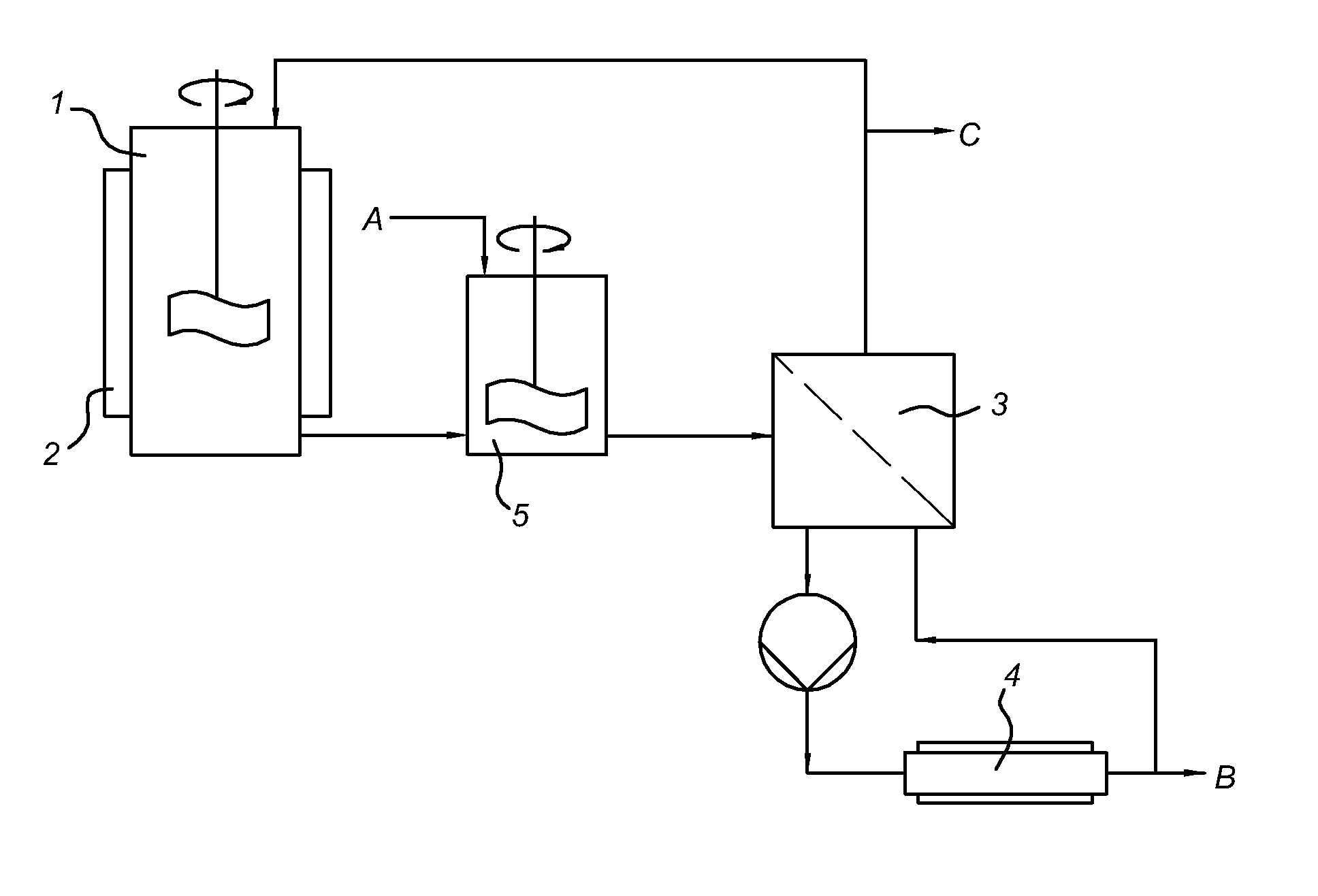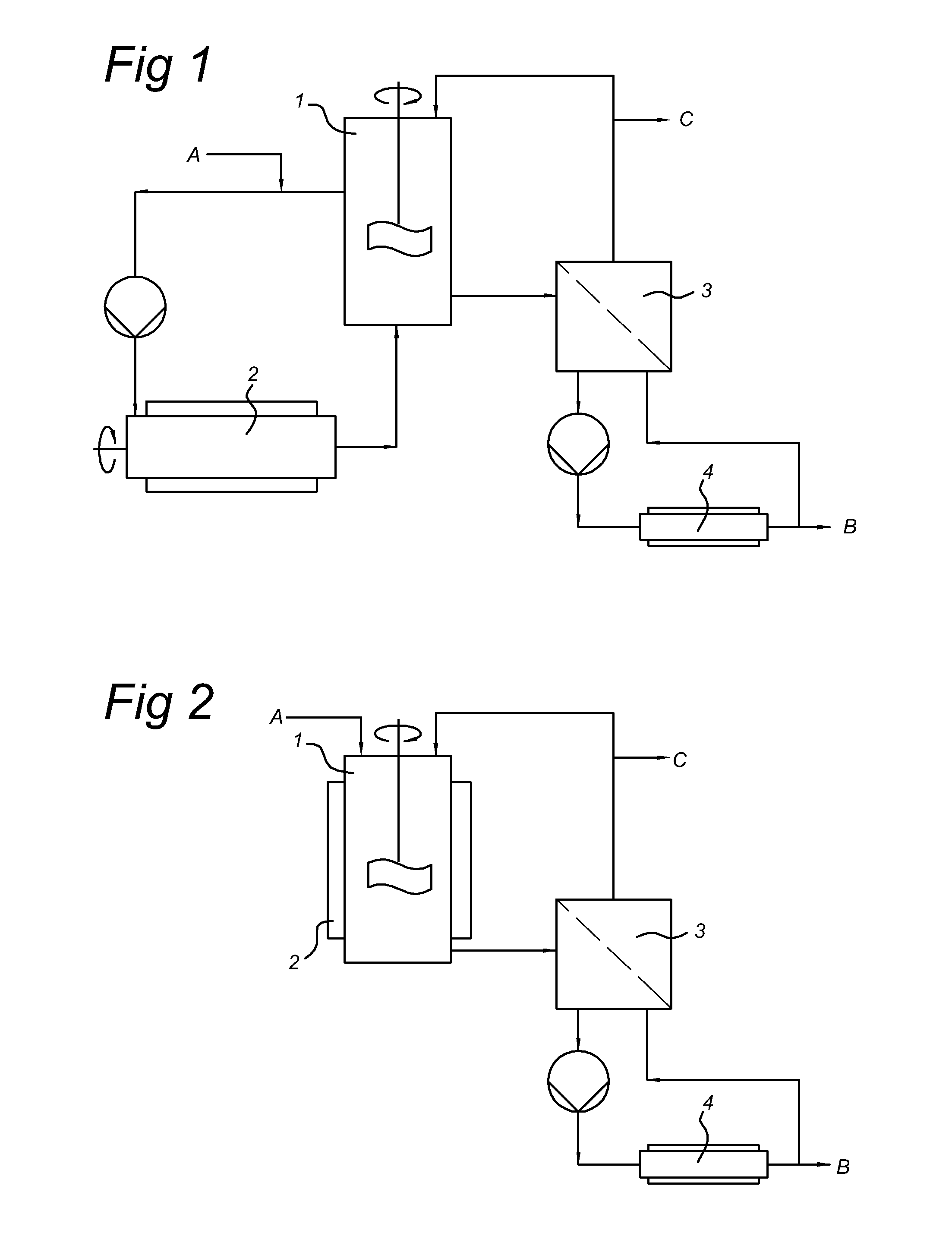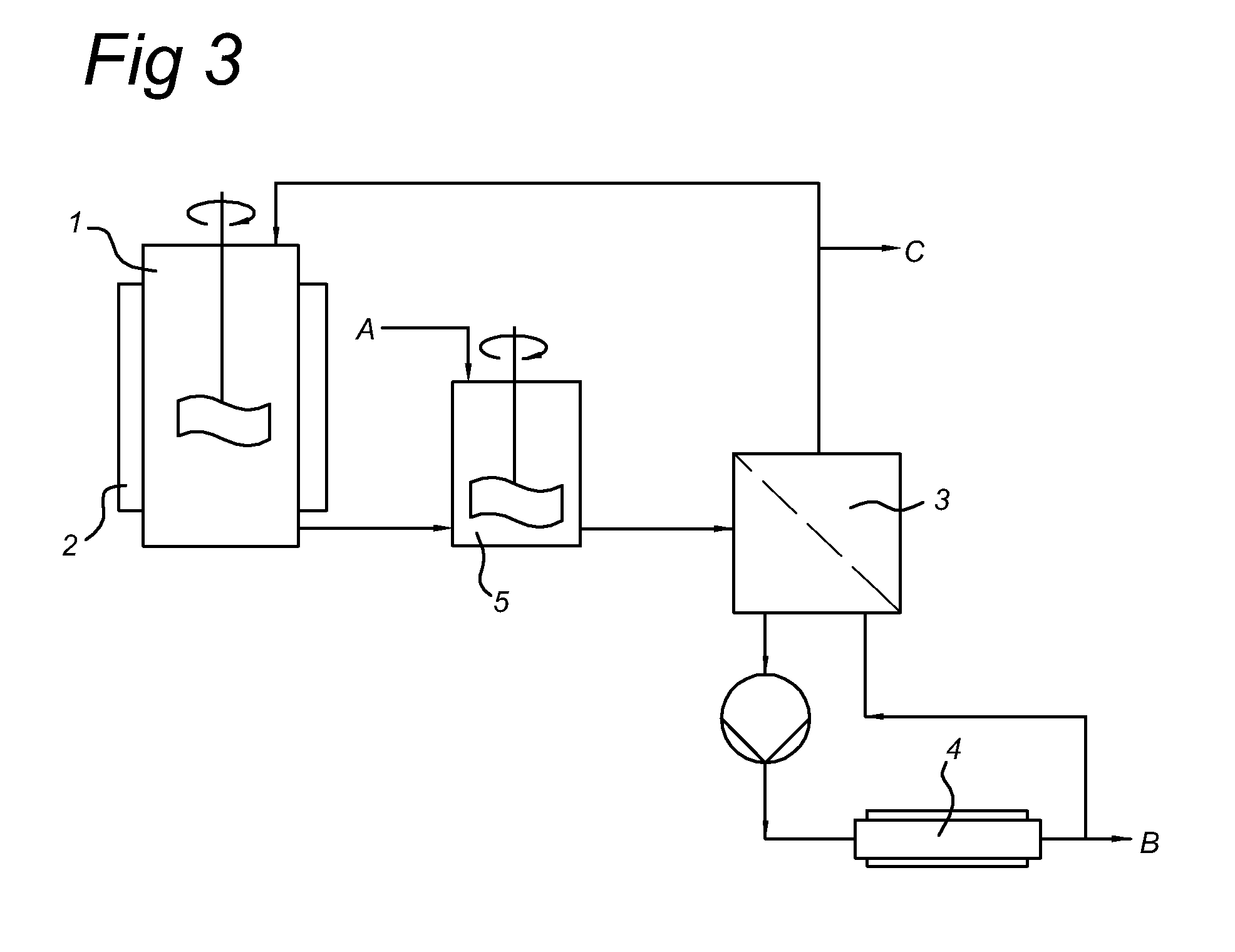Purification of lactide rich streams
- Summary
- Abstract
- Description
- Claims
- Application Information
AI Technical Summary
Benefits of technology
Problems solved by technology
Method used
Image
Examples
example 1
[0051]An experiment was carried out in a cooled stirred glass beaker crystallizer which was filled with an amount of 500 ml of l-lactide rich feed solution with a concentration of 85 wt. % of l-lactide. The lacitde solution was first cooled to 80° C. and the temperature was then maintained at that level for about 20 minutes. No formation of crystals could be observed. The temperature was then further reduced at a rate of 5° C. per hour and after about 60 minutes and at a temperature of 75° C. spontaneous nucleation occurred, resulting in a viscous inseparable mass of ultra-fine crystals and mother liquor.
example 2
[0052]The first part of the test of example 1 was repeated, but at this time 5 grams of seed crystals with an average length of between 30 m and 150 m were added at a temperature of 80.4° C. Instantly after the addition the temperature in the beaker vessel increased to 83.5° C., indicating the equilibrium temperature of the feed. The temperature in the vessel was then again reduced at a rate of 5° C. per hour and after about 30 minutes the suspension as formed during this experiment was poured into a centrifuge in order to separate off the impurity containing mother liquor. A “dry” filter cake with well defined crystals with a length up to 800 μm was achieved. Contrary to the test in Example 1, these crystals were easy to separate from the slurry.
example 3
[0053]In a dedicated test rig according to FIG. 2 with a scraped surface vessel crystallizer and a mechanical piston column, an impure lactide rich feed was added with a composition as further indicated in table 1.
TABLE 1Feed compositionComponent:L-Lactidewt %89.4M-Lactidewt %2.2LnAwt %5.0Other impuritieswt %3.4Residual aciditymeq / kgwaterppm
[0054]The scraped surface vessel crystallizer was cooled to a temperature of 85° C. The temperature was maintained at that level and seed crystals were added. Immediately after the seeding the temperature of the crystallizer increased to 86.8° C. By further cooling down the cooling liquid which is circulated through the outer jacket, more crystals were formed. This was evidenced during the test by a continuous further decrease of the temperature in the crystallizer. The constant scraping of the crystallizer walls avoided the formation of any crystals at the heat exchanger surface. Approximately 4 hours after the formation of the first crystals th...
PUM
 Login to View More
Login to View More Abstract
Description
Claims
Application Information
 Login to View More
Login to View More - R&D
- Intellectual Property
- Life Sciences
- Materials
- Tech Scout
- Unparalleled Data Quality
- Higher Quality Content
- 60% Fewer Hallucinations
Browse by: Latest US Patents, China's latest patents, Technical Efficacy Thesaurus, Application Domain, Technology Topic, Popular Technical Reports.
© 2025 PatSnap. All rights reserved.Legal|Privacy policy|Modern Slavery Act Transparency Statement|Sitemap|About US| Contact US: help@patsnap.com



